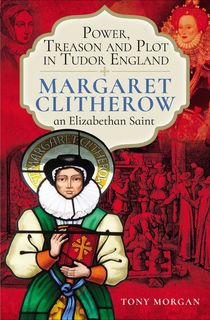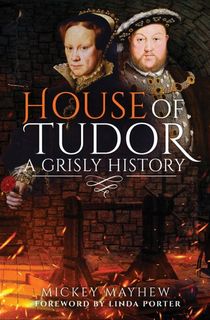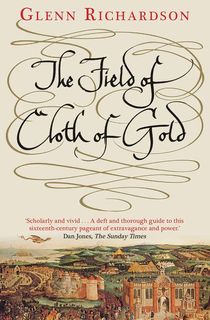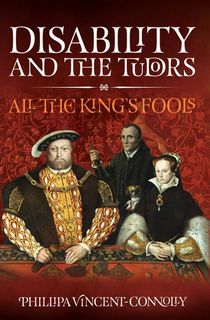From Henry VII to Elizabeth I, the Tudor period saw some of the most prominent figures in history. Spanning from 1485 to 1603, the period of Tudor rule witnessed a wide range of changes, including Henry VIII’s break from the Catholic Church and a rise in support for literature and the arts. Today, countless books and movies attempt to recreate the drama of the Tudor period, whether through the lives of its rulers or the overarching conflicts between England and the rest of Europe.
From the origins of “Bloody Mary” to Henry VIII’s many ill-fated wives, these 10 historical books about Tudor England will transport you to the past.

Anne Boleyn & Elizabeth I: The Mother and Daughter Who Forever Changed British History
Retold countless times in books, movies, and even plays like the famous musical Six, the intense drama of Henry VIII’s six wives and their various outcomes is one of the most enduring legacies of the Tudor era. Perhaps Henry VIII’s most famous wife, Anne Boleyn shines as the central tragic figure in many of these retellings, mainly for her eventual beheading in 1536, and her important role as the mother of Elizabeth I. In her new account Anne Boleyn & Elizabeth I, Tracy Borman takes a novel approach to this notorious aspect of the Tudor era by focusing on the relationship and individual power of Anne Boleyn and the daughter she left behind in death, Elizabeth. Emphasizing the enduring influence of the mother-daughter duo, Borman sheds light on hidden legacies to present the Tudor era in a fascinating new way.

Power, Treason and Plot in Tudor England
Tudor England is well known by historians as a time of great religious strife. Through the life of Margaret Clitherow, eventually made into a saint and one of the Forty Martyrs of England and Wales, Power, Treason, and Plot in Tudor England provides compelling insight into the religious turmoil that permeated the Tudor era. Margaret’s journey from Protestantism to recusant Catholic, and her refusal to conform to religious and political pressures culminated in her execution. Serving as “a microcosm of Tudor life”, Margaret’s individual story unveils the complexities of faith, betrayal and political power games that took place under Tudor rule.

Following in the Footsteps of Henry Tudor
When Henry VII defeated Richard III in the Battle of Bosworth and became the first monarch of the House of Tudor in 1485, the famed Tudor dynasty began. Phil Carradice reveals additional intricacies to the onset of the Tudor dynasty by tracing the history of Henry VII up to the turning point of that battle. Taking readers on a journey, Carradice’s tale of Henry’s march to the throne unveils the foundations of a dynasty that would last for over 100 years and initiate the beginning of the modern age. If the goal is to dive into Tudor history, Following in the Footsteps of Henry Tudor is not to be missed.

The Private Lives of the Tudors
Prolific historian Tracy Borman has written a host of books illuminating various aspects of the Tudor era, but her work shines especially in her examination of the Tudor rulers. Perfect for either the budding historian or the longtime Tudor fan, Borman’s detailed examination of the private lives of the Tudor family offers an intimate and even surprising glimpse behind the scenes of some of England’s most famous historical figures. Tracing the course of the dynasty over more than a century, Borman covers every aspect imaginable, from how heirs were birthed to the Tudors’ favorite foods and leisure activities. In doing so, she paints a meticulous picture of the Tudor’s personal lives sure to enchant even those well-acquainted with Tudor history.

House of Tudor
For the history reader interested in the gritty, gory, and grisly, this gruesome gathering of the House of Tudor’s darkest moments is an especially great selection. They say that violence is inherent to power, and that debatable truth is especially applicable to the Tudors and their methods of maintaining the throne. While focusing particularly on the harrowing ways the Tudors disposed of their enemies, House of Tudor: A Grisly History also covers the rampant diseases, less-than-ideal living conditions, and painful forms of punishment that took place during the Tudor era. Whether your interests lie with medicine or law enforcement, House of Tudor: A Grisly History offers a history book well-suited to the darker aspects of society.

The Field of Cloth of Gold
The Tudor era saw great conflict between the English and French. Released by Yale University Press, The Field of Cloth of Gold offers the first comprehensive history in 40 years of one of the most impactful events of the Tudor era: The 1520 meeting and consequent “peace-promoting rally” (The Sunday Times) between English ruler Henry VIII and French ruler Francis I. In his book, Glenn Richardson examines the contests, conversations, and entertainment that took place as a result of this grand effort between nations to attain some sort of “Universal Peace,” casting new light on the important socio-political ramifications of an event that has been historically painted as an extravagant parade.

1545: Who Sank the Mary Rose?
Another fascinating event from the Tudor era was the 1545 sinking of the Mary Rose, Henry VIII’s famous warship that sank under attack by the French. Inexplicable until now, since the ship’s discovery in 1982, archeologists have slowly been able to recreate the story behind the Mary Rose by analyzing her remains. In 1545: Who Sank the Mary Rose, Peter Marsden not only weaves a compelling story of Britain’s seafaring past, but also reveals much about the political and social atmosphere at the heart of the Tudor era.

Sex and Sexuality in Tudor England
Sex and Sexuality in Tudor England takes a saucy look at the raunchier aspects of life in the Tudor era. Far from a time of purity, the Tudor era is full of titillating stories that provide valuable information about human sexuality during England’s past. In Sex and Sexuality in Tudor England, Carol McGrath outlines the societal rules, expectations, and realities around sex in Tudor England, from the role of the Church, to the importance of fashion and the occurrence of shocking scandals. Exploring questions such as how same-sex couples were viewed, or when married couples were allowed to have sex, McGrath’s juicy history takes a bold look at the ways in which those living in the Tudor era made, broke, and bent to societal rules.

Disability and the Tudors
Disability is both a lived reality and a socially understood classification that can reveal much about society. Vividly apparent in Phillipa Vincent Connolly’s Disability and the Tudors, the ways that disabled people were treated and identified during the Tudor era offers stark insight into the realities of that time period. While the history of disabled people has often been overlooked, the stories surviving from the Tudor era demonstrate the multifaceted role that disability played in society. Taking readers from the highest to the lowest ranks of society, Connolly’s in-depth examination expertly guides readers' understanding of disability in the Tudor era.

Bloody Mary
Wrapping up the list, in another book focusing on a crucial figure from the Tudor era nearly 70 years after Henry I, Phil Carradice outlines the life, impact, and importance of the notorious Queen Mary I, daughter of Henry VIII, and how she became forever known as “Bloody Mary.” Crowned in 1553, in the short five years of her reign, Mary I transformed from an adored ruler to a reviled tyrant in the eyes of her people. With seasoned historical expertise, Bloody Mary investigates the widespread bloodshed and religious violence that Mary I enforced in an effort to explain the tragic legacy of her rule.

